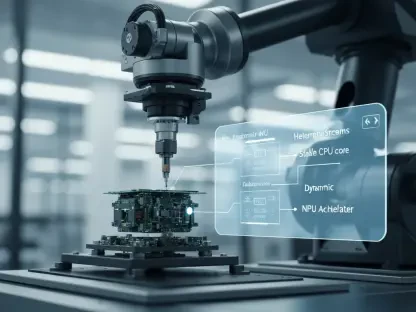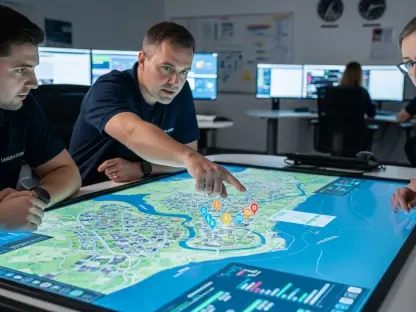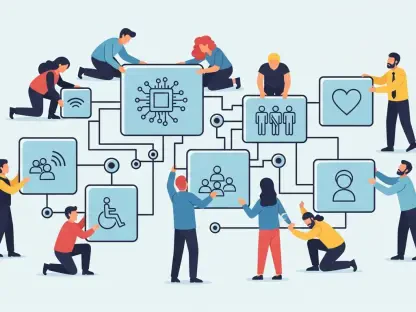In the rapidly evolving landscape of misinformation, social media platforms like X (formerly Twitter) have innovated systems such as the Community Notes program to keep pace. Esteemed technologist Laurent Giraid delves into the program’s novel integration of AI with human input in tackling misinformation, highlighting both the opportunities and challenges that this synergy presents.
Can you explain the current structure of X’s Community Notes program and its primary objective in combating misinformation?
The Community Notes program on X was launched to address the rampant spread of misinformation on social media. It allows community members to add contextual notes to potentially misleading posts. These notes aim to clarify while being reviewed by other members of the community for their helpfulness. Only those deemed particularly useful by the community make it to the public view, providing an additional layer of scrutiny to the information being disseminated.
What inspired the move from an all-human notes system to a hybrid model incorporating AI?
The inspiration came from the pressing need for efficiency and scalability. While humans are excellent at nuanced interpretation, the volume of content generated online is overwhelming. By incorporating AI, especially through large learning models, we aim to maintain the quality of interpretation while increasing speed and the amount of content that can be addressed simultaneously.
How will the integration of large learning models (LLMs) change the way Community Notes are generated?
LLMs bring unprecedented ability to generate notes at scale—something previously unimaginable with human contributors alone. They are capable of quickly producing relevant notes, learning from past data to improve their outputs continually. By operating alongside humans, they enable the system to handle much more content, providing timely checks on emerging stories or claims.
What benefits do researchers believe AI-generated notes will bring to the misinformation-checking process?
AI-generated notes are believed to improve not just the speed of addressing misinformation but also the reach. AI can scale exponentially, processing vast amounts of data and learning patterns rapidly, which is particularly useful in dealing with misinformation that evolves and spreads quickly. This scalability factored with advanced analytics can help provide broader context that might be missed manually.
What is reinforcement learning from community feedback (RLCF), and how does it aim to refine AI-generated notes?
RLCF is a method where AI models learn from the community’s feedback on the notes generated. It’s a dynamic feedback loop. By constantly incorporating views from a wide array of individuals, the system continues to evolve, ideally producing more unbiased and contextually relevant notes as it refines its understanding with each input.
Are there specific risks associated with AI-generated notes potentially being persuasive or inaccurate?
Yes, absolutely. AI models can sometimes generate content that is misleading or too persuasive, unintentionally skewing perceptions if unchecked. This is why human oversight remains critical. AI can also homogenize information, thus potentially limiting diverse perspectives. Balancing AI efficiency with human responsibility is crucial to address these risks.
How might the abundance of AI-generated notes impact human note writers and raters within the Community Notes system?
The sheer volume of AI-generated notes might discourage human participation if people feel their contributions are being overshadowed, or lead to difficulty in processing the large influx of content. We need to ensure that human contributors don’t feel overwhelmed or redundant, maintaining a collaborative ecosystem where both AI and humans enhance the process together.
What measures can be implemented to ensure that the human involvement in note creation and rating is maintained?
Maintaining clear roles where human insight is indispensable helps retain their involvement. Encouraging community engagement, emphasizing the irreplaceable human judgment, and rewarding participation are vital. We should think of AI as augments, not replacements, to human efforts in this context.
How do the researchers envisage the role of AI ‘co-pilots’ for human writers, and in what ways can AI assist human raters?
AI ‘co-pilots’ are envisioned as assistants that provide research support and generate initial drafts. For raters, AI can highlight patterns or inconsistencies, making the vetting process more efficient. This collaborative effort allows humans to focus on strategic interpretation and ethical considerations, topics where AI might lack subtlety.
What future plans do researchers have for further AI integration into the Community Notes pipeline?
Researchers are exploring more sophisticated AI integrations, such as personalizing models to match the distinct needs of various content areas or user groups, and developing automatic adaptation methods for notes, so they remain relevant as contexts change. The infrastructure aims to remain robust while being open for future integrations that uphold ethical standards.
What methods are being considered for verifying and authenticating human raters and writers to maintain the integrity of the system?
Verifying human raters could involve multi-factor authentication or leveraging blockchain for transparent history tracking of contributions. This ensures that the system remains free from manipulation and maintains credibility in the community’s eyes.
Can you discuss how existing validated notes might be adapted and reapplied to new contexts?
Adapting existing notes requires intelligent pattern recognition within AI systems to identify new contexts where similar clarifying notes apply. It avoids repetitive efforts, allowing human raters to focus on novel content. This capacity for adaptation expands the utility of existing notes while keeping the essence of human judgment at the forefront.
What challenges or limitations do researchers foresee in ensuring that the “human touch” is preserved in this collaboration between humans and AI?
One major challenge is ensuring AI doesn’t overshadow human creativity and critical thinking. There’s a need for rigorous testing and constant adjustments to keep AI from becoming dominant or reducing diversity of thought. The goal is to retain the human ability to interpret subtleties and ethical implications, which is something AI may never fully grasp.
Could you elaborate on the researchers’ end goal for the Community Notes program, especially regarding their vision of empowering human critical thinking?
The researchers envision the program as a tool that enhances rather than dictates human interaction. By providing comprehensive, timely context through a human-AI partnership, the community should be empowered to think critically and make informed decisions. Ultimately, this collaboration aims to foster a deeper understanding rather than simply offering information or conclusions.









